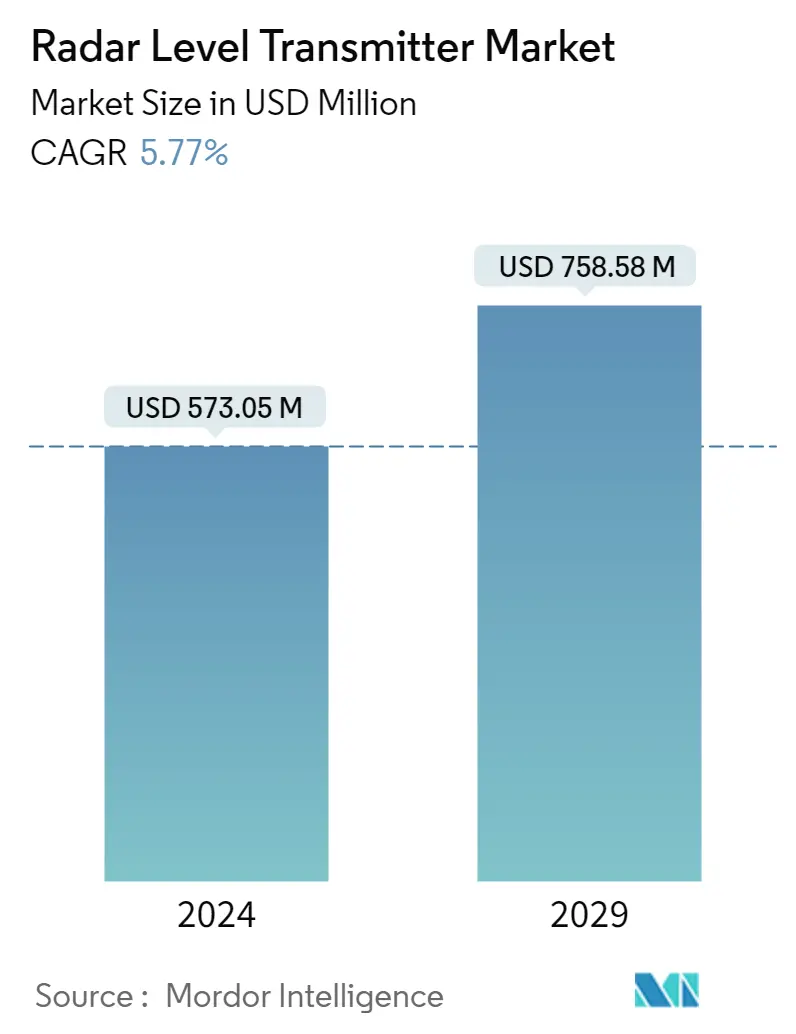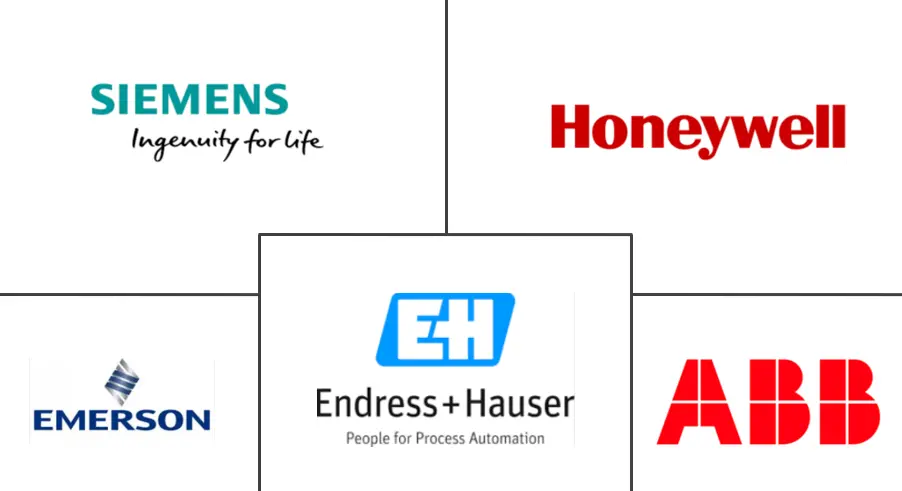Market Size of Radar Level Transmitter Industry

| Study Period | 2019 - 2029 |
| Market Size (2024) | USD 573.05 Million |
| Market Size (2029) | USD 758.58 Million |
| CAGR (2024 - 2029) | 5.77 % |
| Fastest Growing Market | Asia Pacific |
| Largest Market | Asia-Pacific |
Major Players
*Disclaimer: Major Players sorted in no particular order |
Need a report that reflects how COVID-19 has impacted this market and its growth?
Radar Level Transmitter Market Analysis
The Radar Level Transmitter Market size is estimated at USD 573.05 million in 2024, and is expected to reach USD 758.58 million by 2029, growing at a CAGR of 5.77% during the forecast period (2024-2029).
Coronavirus's impact has not been the same on the vendors since some of them offer and service radar-level transmitters only for the food sector. In contrast, others provide only for the oil & gas sector. Nowadays, vendors who cater to food processing are most profitable since the manufacturing of food-related items has been deemed under essential services, and those facilities have been working extra hours to fulfill the demand. However, from the supply side, the vendors face issues procuring the components due to disruption in the supply chain
- Level measurement technology is widely used across many sectors such as construction, industrial, wastewater, manufacturing, oil, and gas, among others. Radar level measurement is based on calculating the time required for completion of the trip between the transducer and the sensed material level.
- The performance of radar level transmitters has improved over the last few years, but their costs haven't increased at a similar rate. They have become more affordable compared to several other level measurement technologies. However, the product's economic benefit isn't limited to return on investment (ROI) also. As the expertise required to set up newer level technologies has decreased, installation and operations costs have even gone down significantly.
- For both non-contacting or contacting radar, significant improvements in digital signal processing and radar component design have allowed them to handle a broader range of applications even as the price has dropped. In the case of some radar level transmitters, the operating frequency has moved to the W band. Within this frequency spectrum, instruments operating from 78 GHz to over 80 GHz are now more popular than other variants.
- To an end-user, the focus should not be the operating frequency because some level applications are better-suited for lower operating frequencies. Moreover, the higher frequency provides unprecedented flexibility in terms of installation. Thus, the need to retrofit the process connections where instruments are installed has decreased. Another benefit of higher frequency is the instrument signal is much narrower than the signal from instruments operating in the C band.
